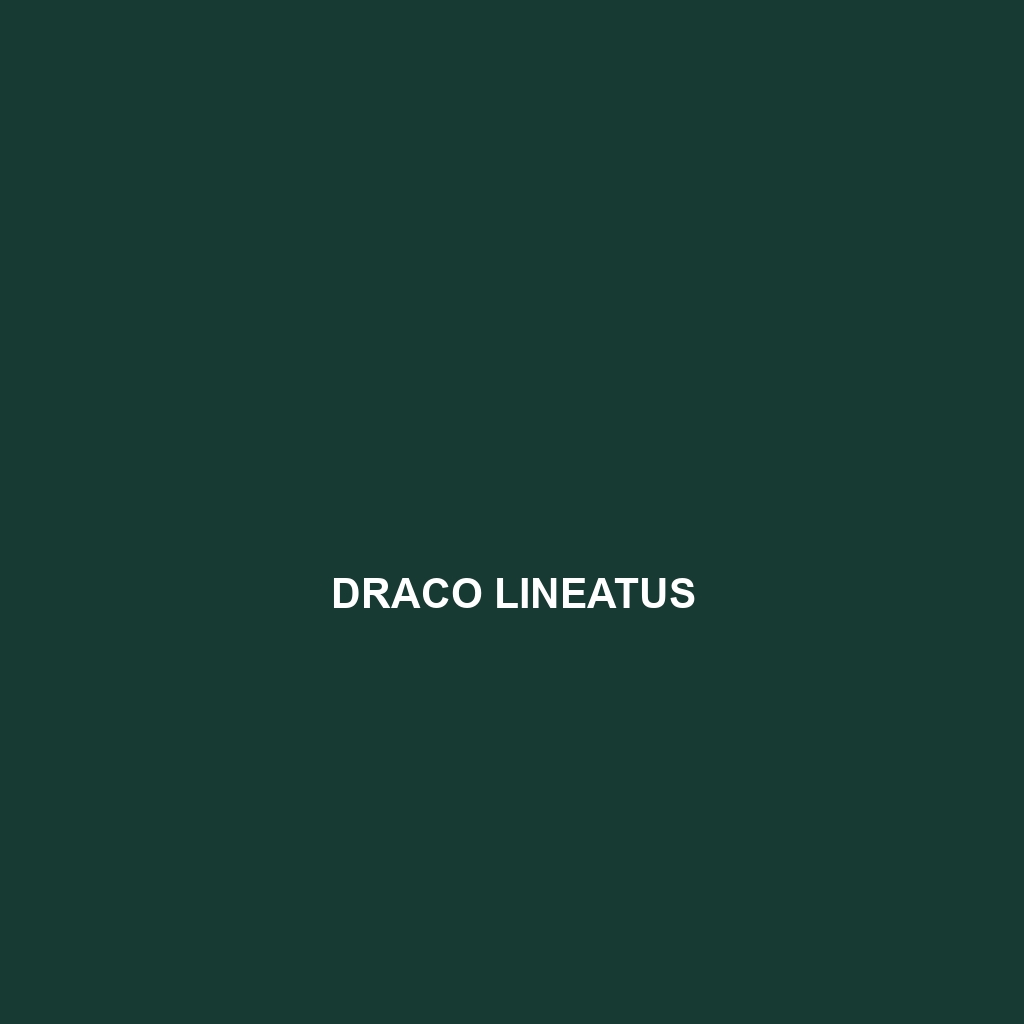Common Name
Draco lineatus
Scientific Name
Draco lineatus
Habitat
Draco lineatus, commonly known as the lined dragon, primarily inhabits the tropical rainforests of Southeast Asia, particularly in countries such as the Philippines, Indonesia, and Malaysia. These vibrant environments provide the warm, humid conditions essential for its survival. The lined dragon is often found in areas with dense foliage, where it roams between trees and utilizes its ability to glide for movement from one location to another. They are also observed in mixed forests and occasionally in savannas that border these rainforests. The species thrives in regions where vertical space is abundant and where temperatures generally remain between 20°C and 30°C (68°F to 86°F).
Physical Characteristics
The lined dragon exhibits several distinct physical characteristics that contribute to its unique appearance. Typically growing to sizes ranging from 18 to 25 centimeters (7 to 10 inches) in length, Draco lineatus possesses a flat, elongated body that aids in its gliding abilities. The species is noted for its prominent throat flap, or “dewlap,” which can be extended and is used in courtship displays and territorial displays. The coloration of the lined dragon often includes shades of green, brown, and gold, which serves as camouflage against tree bark and foliage. Moreover, their rib-like extensions of skin allow them to glide gracefully, making them well-suited for their arboreal habitat.
Behavior
Draco lineatus displays fascinating behavior, particularly in its gliding abilities. It has adaptations that allow it to leap from high branches and glide long distances – up to 10 meters (33 feet) – while using its limbs and wing-like flaps for stability. Lined dragons are mostly diurnal, remaining active during the daytime hours. Their social interactions can include vocalizations and displays involving their dewlaps to establish dominance or attract mates. During the breeding season, males engage in elaborate courtship rituals to impress females.
Diet
The dietary habits of Draco lineatus can best be categorized as insectivorous, as they primarily feed on insects and small arthropods found in the trees of their rainforest habitat. Common prey includes ants, termites, and various beetles. The lined dragon utilizes its keen eyesight to spot food from a distance before gliding to capture its meal, showcasing a unique hunting technique that minimizes energy expenditure. Occasionally, they may also feed on nectar from flowers, aiding in pollination within their ecosystem.
Reproduction
Reproduction in Draco lineatus typically occurs during the wet season, when environmental conditions are most favorable. Males perform elaborate displays to attract females, often using their colorful dewlaps. After successful courtship, females lay a clutch of about 2 to 4 eggs, which they often hide among thick foliage to avoid predation. The gestation period lasts approximately 40 days before the eggs hatch, and the young are born fully formed, ready to climb and glide shortly after they emerge from the eggs. Parental care is limited, but females may stay close to ensure the safety of their offspring during their early days.
Conservation Status
The conservation status of Draco lineatus is categorized as Least Concern according to the IUCN Red List. While this classification indicates that the species is not currently threatened with extinction, habitat loss due to deforestation and urban development poses potential risks. Local conservation efforts focus on habitat preservation and establishing protected areas to ensure the lined dragon’s habitat remains intact. Continuous monitoring is necessary to anticipate any changes in its population dynamics and to address emerging threats.
Interesting Facts
One fascinating aspect of Draco lineatus is its remarkable ability to glide, which is not just for travel but also a method to escape from predators. This striking reptile is often mistaken for a small dragon due to its unique appearance and movements. Interestingly, the lined dragon can manipulate the angle of its body while gliding, allowing it to navigate effectively through the forest. These adaptations are pivotal for both mobility and evasion, showcasing an impressive evolutionary feat.
Role in Ecosystem
Draco lineatus plays an essential role in its ecosystem by acting as both a predator and a pollinator. Its diet of insects helps regulate pest populations, thereby maintaining a healthy balance within the rainforest’s food web. Additionally, when feeding on nectar, the lined dragon contributes to pollination, which is crucial for many plant species within its habitat. This dual role highlights the lined dragon’s importance not only as a species but also as a keystone component in the complex interactions that sustain rainforest ecosystems.
